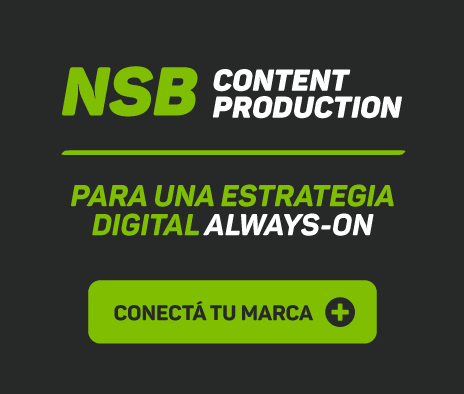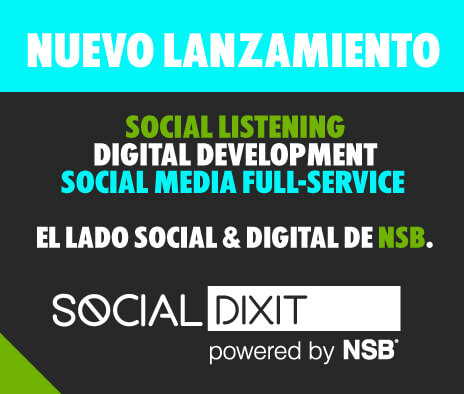Starbucks’ deal with Nestlé shows the brand knows where its core competencies lie, but for the partnership to work they must take a long-term view.
Starbucks has partnered with Nestlé to help it sell coffee. At first sight, that sentence appears a little odd. Like selling coals to Newcastle or ice to Eskimos, why on earth would Starbucks need any help selling coffee?
The answer comes from two very different places. To understand why Starbucks needs Nestlé you have to grasp two of the more established theories of management thinking – core competency and competitive strategy – and then appreciate one of the most vilified and valuable concepts in brand management: licensing.
A core competence
Let’s start with core competency, which was introduced to the field of management in 1990 by the professors Gary Hamel and CK Prahalad in a now legendary Harvard Business Review article. It’s a deceptively simple piece of analysis. The authors argue that successful firms develop and then strengthen a small set of core competencies that lie at the centre of their ability to make money and grow.
These competencies usually provide access to a wide variety of markets, make a considerable contribution to the benefits that customers derive from the brand and are relatively difficult for competitors to replicate. Understanding which competencies a company should focus on and improve, and which to outsource or avoid, is a fundamental strategic success factor.
At this point there might be many of you sniffing suspiciously at the concept and its abject simplicity. I did the same thing when I first read the Hamel and Prahalad paper many moons ago as a super arrogant, super inexperienced assistant professor at London Business School.
Twenty years, a double-digit increase in body fat and similar proportional increase in grey hair later and I beg to differ. Across those two decades I have found myself in meeting rooms in Oslo/Chicago/Santiago/Paris asking my exhausted colleagues why we just fucked everything up, only to be told by a weary peer that, “we just cannot do this kind of thing well”. Core competence is, annoyingly, completely spot on.
One might think that among Starbucks’ many competencies is its ability to source, refine and then sell coffee. Not quite. Core competencies are rarely this broad and it is always a mistake to assume that abilities in one area of business are matched in others just because the product happens to be the same. Very few breweries can run good pubs, for example. Beer might be the common factor but brewing a pint versus pulling it for a thirsty punter turn out to be completely different things.
A shit strategy takes a day to come up with and then requires a workshop and a 70-page presentation to explain.
In Starbucks’ case, its core strategic strengths are an ability to market premium products on an international scale and to retail them through an on-premise retail model.
More pertinently, there are also things Starbucks does not do well. First, its premium pricing model (it charges three quid for a small flat white remember) numbs its strategic ability to operate at lower price points where margins and operating costs are tighter.
Second, it sells the majority of its coffee through its own channels and into its own cafes. That means it has very little experience of selling through wholesalers and, ultimately, into big retail chains.
Perhaps it’s no surprise, then, that while its 28,000 cafes continue to dominate the world of on-premise coffee, retail sales of products like capsules and beans sold through supermarkets and other grocery retailers have been disappointing. Only about 10% of the coffee company’s revenues come from retail sales so it’s clear why Starbucks needs Nestlé.
The Swiss giant is a master at mass marketing and sells most of its brands through wholesale channels into big retailers. Nestlé gets the Starbucks brand to complement its own growing coffee business and also gains a brand with significantly more heft in the US where it has traditionally struggled with its existing coffee portfolio.
Strategy is deciding what not to do
But if you’re Starbucks why outsource such a huge part of the coffee business and not develop a competency in mid-priced offers and off-premise retail distribution? For that answer we must turn to the fundamental strategic tenet from Michael Porter, another demi-god of strategic thinking. Porter’s ultimate conclusion that the essence of strategy is a company deciding what it will not do remains one of the great observations of modern business thinking.
Every company is going to do something. But what often defines a successful strategy is deciding what the firm will not do and focusing on a much smaller set of activities for strategic success.
Again, it sounds simple, but think about our own small world of marketing and the tendency of managers to target all segments, with too many brands, across too many products, using too many words in the positioning and you quickly get a taste for why strategy by rejection is a powerful concept; less is usually so very much more.
Again, as I get older, fatter and significantly wiser I have come to appreciate the ability to find companies and marketers who already get this principle and apply it to their businesses. I leave it to the younger and more ineffective brand consultants to create brands, products and words for the “brand essence presentation” deck. My speciality is killing products, brands and as many of the words inside the positioning rhomboid as they will let me before someone says, “stop him!”.
Too many marketers poo-poo licensing as a bad branding move. I defy them to turn down millions in pure profit every year.
A shit strategy takes a day to come up with and then requires a workshop and a 70-page presentation to explain. A great one takes months of thinking but never needs more than a page, usually half a page, to explain to anyone.
In the case of Starbucks, the company has a page sitting on the CEO’s desk with three major issues and one opportunity. Investors are starting to get jittery about lacklustre revenues, which suggests the company is struggling to attract new customers to its locations.
A growing army of craft coffee companies are also taking an ever-bigger slice of Starbucks’ growth and threatening to relegate the coffee brand to middle-tier no-man’s land. Finally, these combined concerns have driven Starbucks’ share price down by 5% in the last year during a bull market in which almost everyone else is enjoying significant gains. The only good news on the horizon is China where Starbucks is in the ascendancy as the Middle Kingdom develops a full-blown addiction for premium coffee.
You can begin to see what Starbucks is up to. The company will refocus its efforts to revitalise its offer and rejuvenate is customer base while pushing up-market to compete with craft coffee. It will take the billions in licensing revenues that Nestlé is about to pay (more of that in a moment) and return it to its investors in the form of dividends and buybacks to keep them sweet.
It will focus on China and a market with such potential for coffee that it could one day eclipse even America. And with all this to occupy it, Starbucks will enjoy the profits but not the labours of the retail grocery market by handing that whole business over to Nestlé.
The biggest branding benefit of all
The deal itself is a classic licensing arrangement, in that extremely large amounts of money are changing hands for apparently no tangible assets. Nestlé will pay Starbucks just over £5bn to enable it to exclusively sell the Starbucks brand of coffee beans, capsules and ground coffee products around the world. That money is, without question, the greatest benefit of brand equity. It’s 100% marginal income and comes without any expectation that Starbucks will provide any form of product to aid Nestlé in its business.
And that is just for starters, Starbucks will then receive a fixed proportion of Nestlé’s sales of Starbucks coffee in the form of quarterly licensing income. While no-one but the top brass will know the final levy, it is almost certainly going to be 3% of retail price. So, for every £8 bag of Starbucks coffee that Tesco sells next year, 100% of it will come from Nestlé but 24p from each sale will go to Starbucks.
And that money, at 100% gross margin, soon adds up. I’ve worked for fashion brands where the licensing income is, wait for it, a nine-figure number. That’s a lot of money for doing nothing and all of it goes to the bottom line. Too many marketers poo-poo licensing as a bad branding move. I defy them to turn down millions in pure profit every year.
For many brands, licensing is an integral part of their success. Brands like Michael Kors ($150m in licensing income last year), FIFA ($205m) and Disney ($3.3bn) …wait was that billion? Yup, Google it, you want to talk core competence? Ask Disney about how well it franchises. The movies are just ads, the money is in the Captain America frisbees and Wookiee-flavoured instant coffee additives.
All too often licensing deals break down because short-term profiteering on the part of the licensee is deemed to be killing the golden branded goose of the licensor.
Of course, there is one spectacular risk in licensing your brand. While you get money for doing nothing there is an abject difference between a licensee like Nestlé that has a limited period to sell the branded products of Starbucks among the many that it takes to market, and a licensor like Starbucks that sees its brand as the single most important, long-term asset on its balance sheet.
In theory, a good licensing deal can be a win:win for both parties. But all too often licensing deals break down because short-term profiteering on the part of the licensee is deemed to be killing the golden branded goose of the licensor.
Despite the integral nature of licensing to brand success, customers literally have no idea it is taking place. They really think Calvin Klein made their underpants, Michael Bublé took a few weeks out from his busy concert schedule to create his latest fragrance (‘By Invitation’ in case you were wondering ladies) and Starbucks sent some of its beans from its café down the road to Sainsbury’s rather than brew them in-house. If customers did not believe this was a genuine, authentic product the license would be almost worthless.
So with the brand being effectively shared between both companies, when the licensee starts to take liberties with a licensed brand, things can turn litigious very quickly.
Indeed, Starbucks knows all about this. It was forced to pay $2.8bn to Kraft when it decided to end an earlier licensing arrangement in 2011 after a 12-year partnership. Starbucks argued that despite increasing sales of its beans and packaged coffee more than tenfold, Kraft embarked upon inconsistent marketing efforts that led to an “erosion of brand equity”. Despite the enormous fine Starbucks’ then CEO Howard Schultz described the resolution as “the right strategic decision for Starbucks, our brand and our shareholders”.
Such disputes are extremely common and should serve as wake-up call for both Nestlé and Starbucks as the ink dries on their new, hopefully long-term, agreement. There is no doubt that coffee is a business that has a lot of buzz at the moment, but it can be a bitter brew when you get the ingredients wrong.
Fuente: https://www.marketingweek.com/


 Versión PDF
Versión PDF





